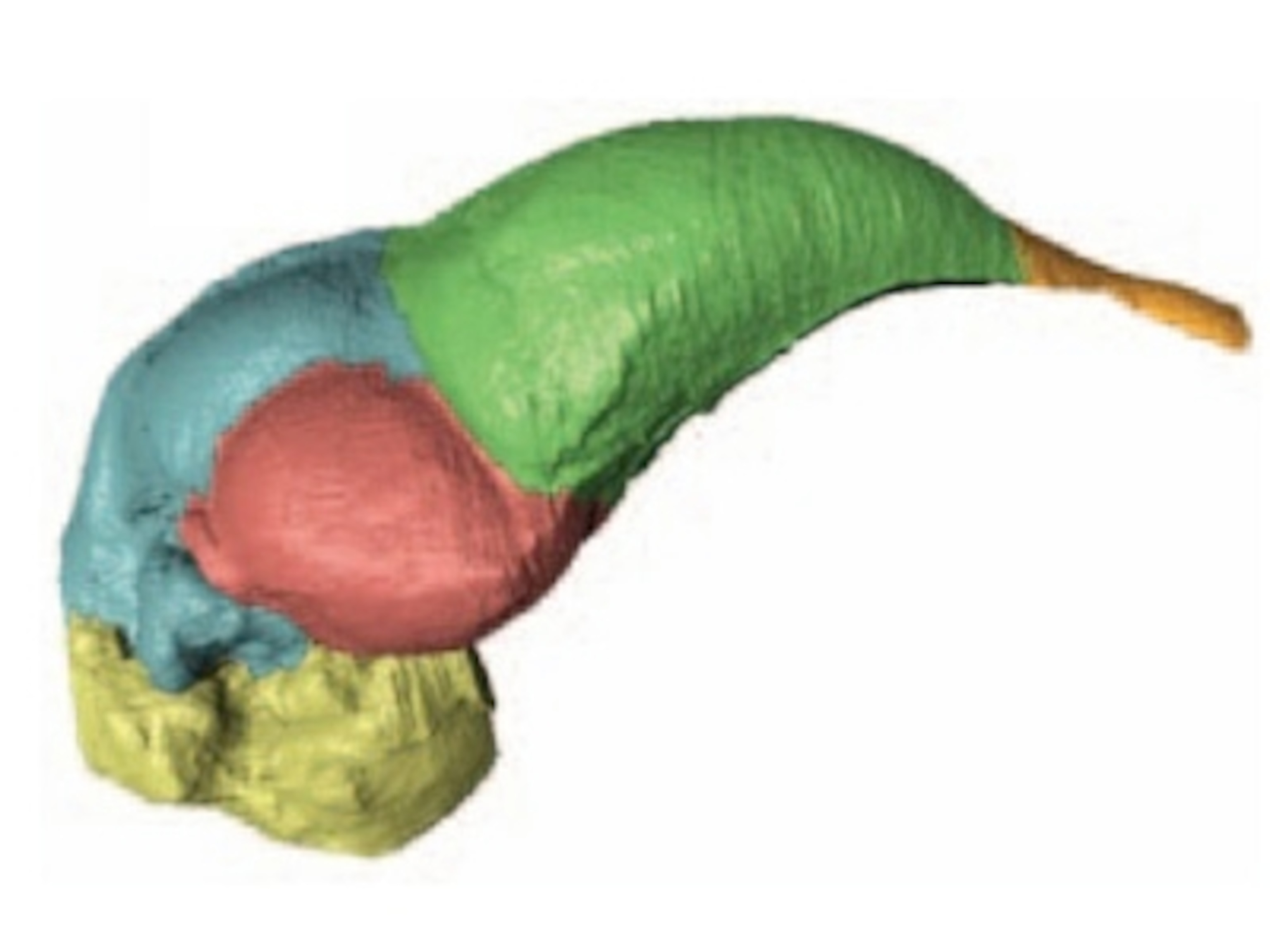Few extinct species have emerged from the Earth with more fanfare than Archaeopteryx. In 1861, workers in a limestone quarry in Germany discovered the impression of a single 145-million-year-old feather. Hermann von Meyer, the paleontologist who first studied, almost thought it was a forgery, until he compared the impressions of the feather on the upper and lower layers of limestone in which it was discovered. “No draughtsman could produce anything so real,” he declared.
Soon von Meyer was working on another fossil: the entire body of the animal that grew such feathers. It had some hallmarks of birds, such as feathered wings, but it also had more reptilian traits seen on no bird today, such as teeth and a long, bony tail. Von Meyer dubbed both fossils Archaeopteryx, meaning “ancient wing.” Darwin had just published the Origin of Species two years earlier, and he couldn’t ask for a better piece of evidence for evolution. “It is a grand case for me,” he confided to a friend.
For over a century Archaeopteryx stood as the crucial fossil for scientists wanting to understand how reptiles evolved into feathered flyers. But starting in the late 1900s, new fossils began to emerge, and, as I wrote in National Geographic in 2011, they revealed a gradual transformation of ground-running dinosaurs into birds.
Even with all the new company of feathered dinosaurs, Archaeopteryx still held an exceptional position in study of the origin of birds. It seemed to be the closest relative to living birds with an anatomy suited to flying, with traits such as long arms. In a very real sense, it was still the first bird.
Now Archaeopteryx is sinking back into the crowd of primitive birds and feathered dinosaurs. As Ed Yong has ably explained, a fresh wave of fossils are coming to light. They reinforce the argument that paleontologists have agreed on for a couple decades now: birds evolved from a lineage of dinosaurs called theropods. But it’s less clear now how exactly Archaeopteryx fits into that evolution. It might still be closely related to the ancestors of living birds, or there might be non-flying theropods that were more closely related. Combine this with the recent discoveries of heavily feathered dinosaurs–feathered down to their feet, in fact–and the possibility emerges that dinosaurs evolved into flyers more than once. We look up in the sky today and see the results of only one of those transitions.
Today comes a new study that gives Archaeopteryx a further push back into the crowd. A team of researchers at the American Museum of Natural History and the University of Texas have taken a look at Archaeopteryx‘s brain, and it’s pretty unexceptional.
Scientists have long known that the brains of living birds are quite exceptional. Compared to reptiles, birds have brains that are huge in proportion to their body. “Hyperinflated” is the word that scientists like to use to describe them.

When it first became clear that birds evolved from theropods, scientists took a look at dinosaur brains to trace this hyperinflation. They found that Archaeopteryx’s brain fell in between that of distantly related theropods, such as Tyrannosaurus rex, and living birds. What’s more, its structure resembled that of birds–at least compared to other dinosaurs. The visual centers were expanded, and the regions of the brain it used to process sound were big. Its brain was, it seemed, ready for flight.
With so many new bird-like dinosaur fossils to peruse, the American Museum team decided to make a more detailed comparison of brain cases from 28 species in total.
In this new study, Archaeopteryx no longer pops out. The researchers found, in fact, that several species of feathered dinosaurs, such as a troodontid called Zanabazar and an oviraptor called Conchoraptor, have brains that are bigger, relative to their body size, than Archaeopteryx.
The scientists also drilled down to look at the sizes of different regions of the brain and found that the only bird-like brain region in Archaeopteryx is the olfactory bulb, which it uses for smelling. But some other dinosaurs have bulbs that are just as big.

It’s possible that the common ancestor of Archaeopteryx and other close relatives of birds had already evolved a more bird-like brain than other dinosaurs. It’s also possible that the different lineages of dinosaurs that were closely related to birds evolved even bigger brains in parallel. If a bird-like brain was essential for the mental challenge of flying through the air, then these other dinosaurs had what it took for flight. It will be up to future paleontologists and ornithologists to figure out how flight shapes the brain, and how well other feathered dinosaurs could fly. But Archeopteryx will only be one among many species that they consider when they tackle those questions.
Update 7/31 2 pm: I fixed the etymology of Archaeopteryx, thanks to a commenter.

